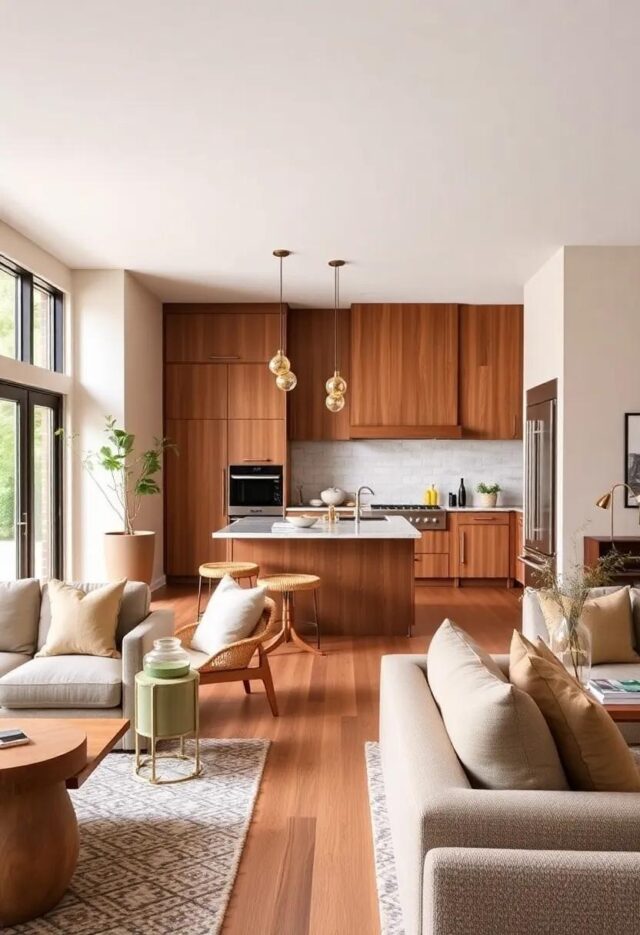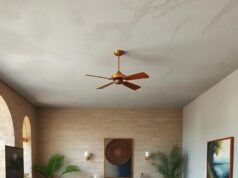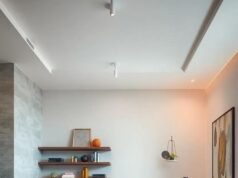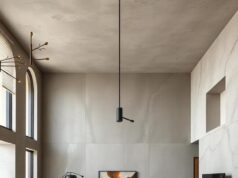In an era where the boundaries between spaces are increasingly blurred, the open concept living room and kitchen has emerged as a quintessential element of contemporary design. This architectural trend not only fosters a sense of togetherness but also invites an abundance of natural light,creating an inviting atmosphere for family and friends too gather. To elevate this harmonious blend of functionality and aesthetics, incorporating wooden accents can breathe warmth and character into the heart of the home. From rich oak beams to subtle walnut cabinetry, wood has an unparalleled ability to evoke comfort and elegance. In this article, we will explore key design principles and creative ideas to embrace warmth in your open concept living space, ensuring that your kitchen and living room not only coexist but flourish in a seamless, stylish environment.
Emphasizing Natural Light in Open living Spaces with Expansive Windows
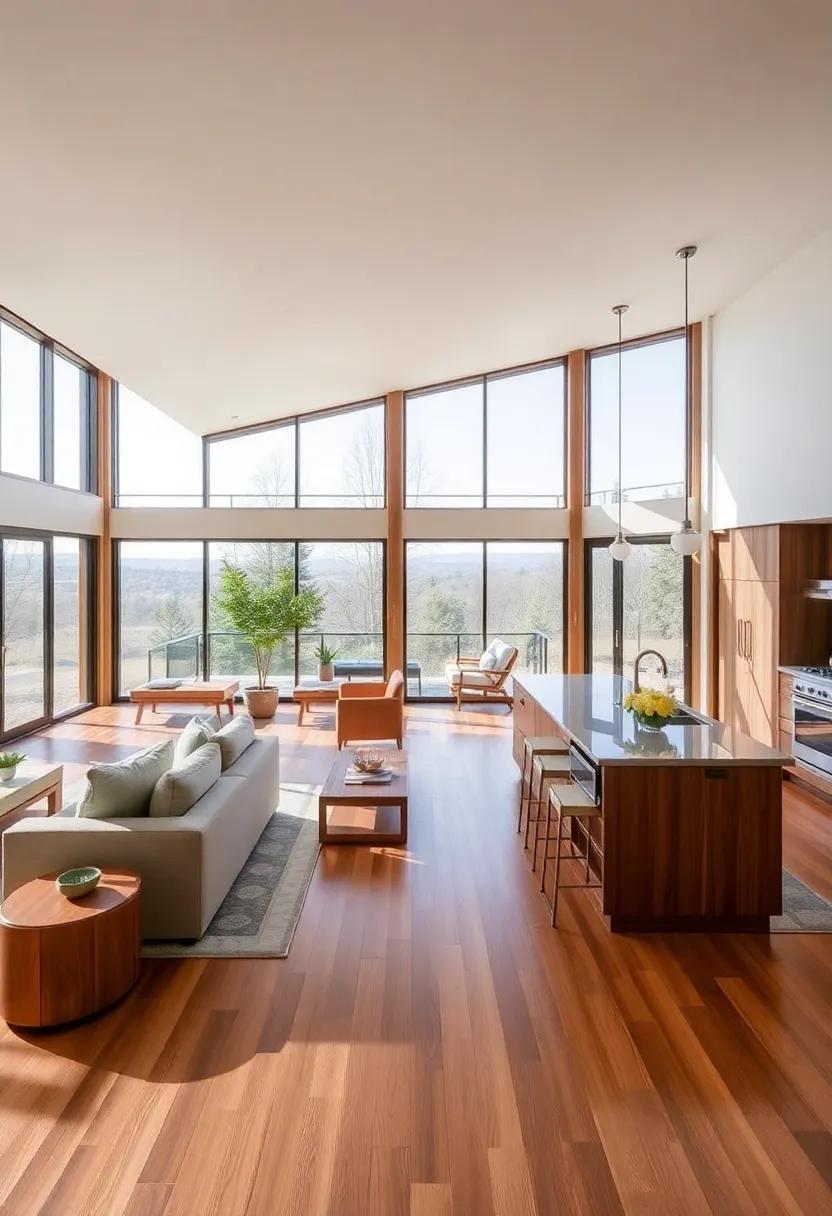
maximizing natural light in open living spaces transforms the atmosphere, creating a sense of warmth and connectivity. Expansive windows not only flood the area with sunlight but also establish a seamless relationship between indoor and outdoor environments. By selecting large panes of glass framed in natural wood, you can harmonize the bright interiors with the earthy elements. The glow of sunlight enhances wooden accents, allowing grain patterns to dance in the light, while inviting biophilic design elements such as indoor plants, which thrive on the added exposure to sunlight.
To enhance the functionality and aesthetic of your living space, consider integrating window designs that promote openness and unobstructed views.Options include:
- Floor-to-ceiling windows: They create a dramatic focal point and never compromise on light.
- Sliding glass doors: These provide easy access to outdoor areas, enriching both space and experience.
- Clerestory windows: Positioned high on walls,they allow light to pierce the room while maintaining privacy.
Complementing these features with light-filtering window treatments ensures that during sunny afternoons, the interior stays bright yet comfortable. A meticulously designed open living space emphasizes a welcoming atmosphere where family gatherings and culinary activities feel naturally inviting amidst cascading sunlight.
Creating a Seamless Flow Between Living Room and Kitchen areas
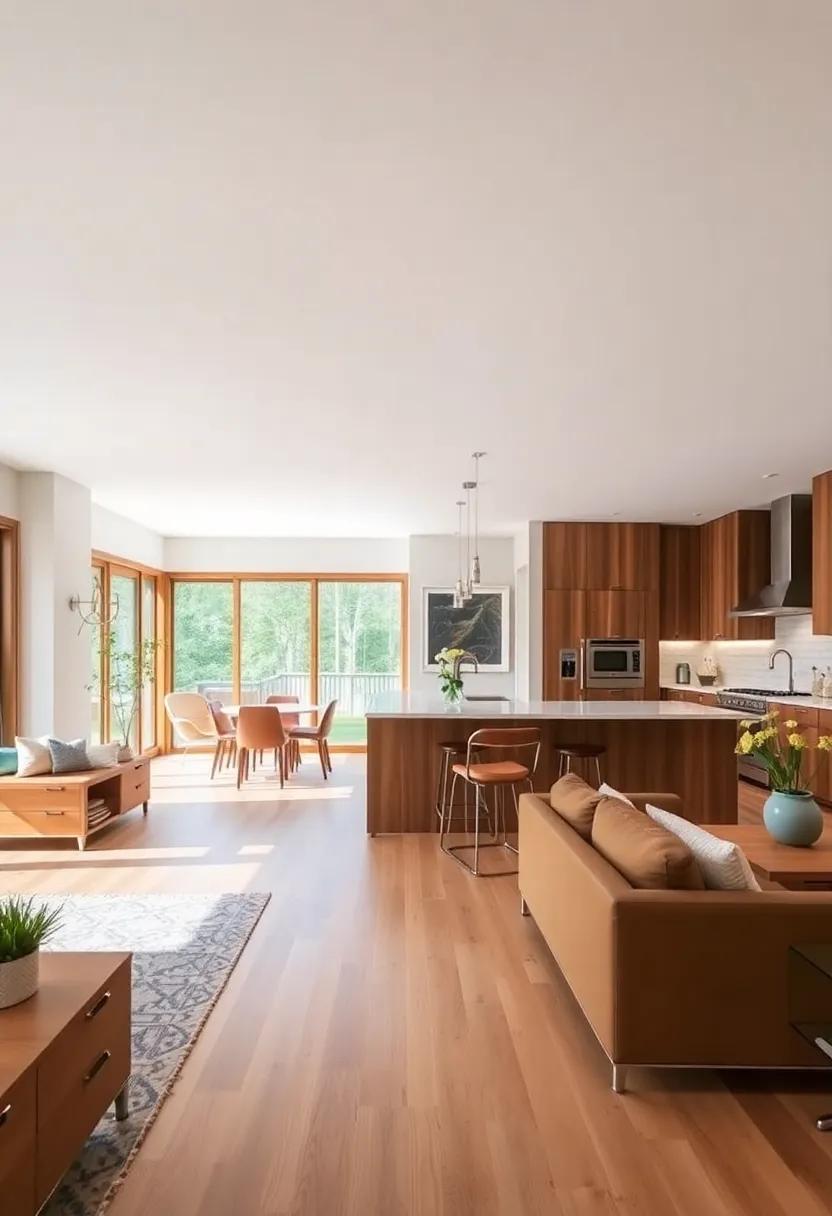
To create an inviting interplay between the living room and kitchen,consider removing physical barriers that disrupt the flow. Open shelving units can serve as transitional pieces, offering both storage and display without confining the space. Incorporating large, framed openings or countertop extensions helps maintain sight lines while enhancing functionality.A cohesive color palette is essential; choose warm hues for walls and accents to mirror the natural tones of wooden fixtures, making the transition feel seamless. Adding strip lighting or pendant lights that connect both areas visually will also draw the eye and enrich the ambiance.
Furniture arrangement plays a critical role in blending these two spaces. Arrange seating in the living room to foster conversation while ensuring it’s anchored around a focal point, such as a fireplace or entertainment unit. Use multi-functional pieces, like ottomans or coffee tables with storage, which can bridge the gap between both areas. Delicate textiles, like area rugs that extend from the living room into the kitchen, can define space while creating warmth. Consider the following elements to enhance this harmonious design:
| Element | Description |
|---|---|
| Wooden Accents | Rich textures and tones create a cozy atmosphere. |
| Open Shelving | Encourages accessibility and integrates decor. |
| Strategic Lighting | Enhances both areas while adding warmth and depth. |
| Color Cohesion | Unified palette ensures smooth visual transition. |
Choosing the Right Wooden Accents for a cozy and Inviting Atmosphere
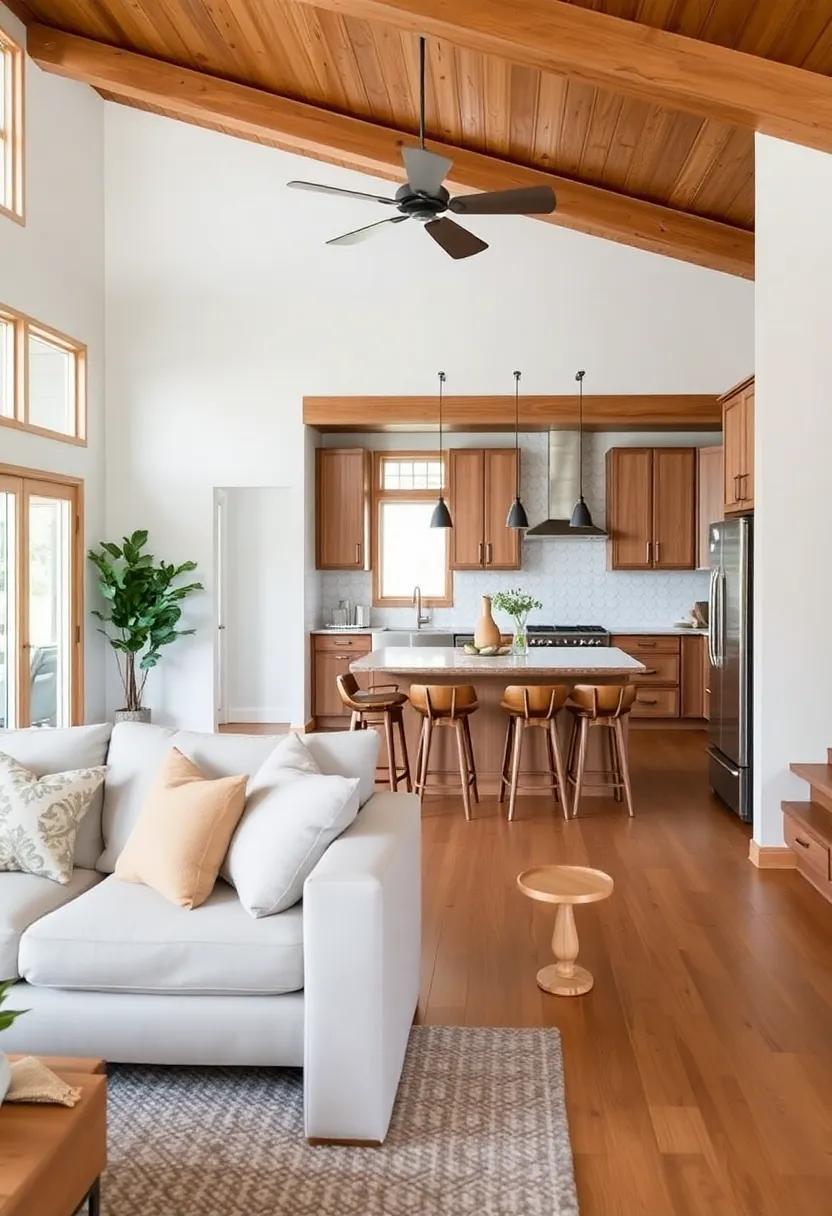
In the quest to create a cozy and inviting atmosphere, the selection of wooden accents can substantially enhance the overall aesthetic of your open concept living room and kitchen.Opting for warm-toned woods like oak, walnut, or cherry can offer a natural, inviting feel. Consider incorporating elements such as:
- Reclaimed wood shelves: Perfect for displaying decor while adding character.
- Wooden beams: Architectural features that evoke warmth and coziness.
- Accentuated furniture: A sturdy wooden dining table or coffee table can serve as a focal point.
In addition to choosing the right types of wood, the finish and treatment can greatly impact the atmosphere. Matte finishes may conjure a rustic charm, while polished surfaces can provide elegance.For a balanced look, mix different wood tones and grains to add depth and intrigue.Here’s a simple guide to help you choose the right wood finishes:
| Wood type | Suggested Finish | Atmosphere Created |
|---|---|---|
| Oak | Matte or Satin | Warm and welcoming |
| walnut | Polished | Elegant and rich |
| Pine | Stained or Unfinished | Casual and rustic |
Crafting a Color Palette that Elevates Warmth and Comfort
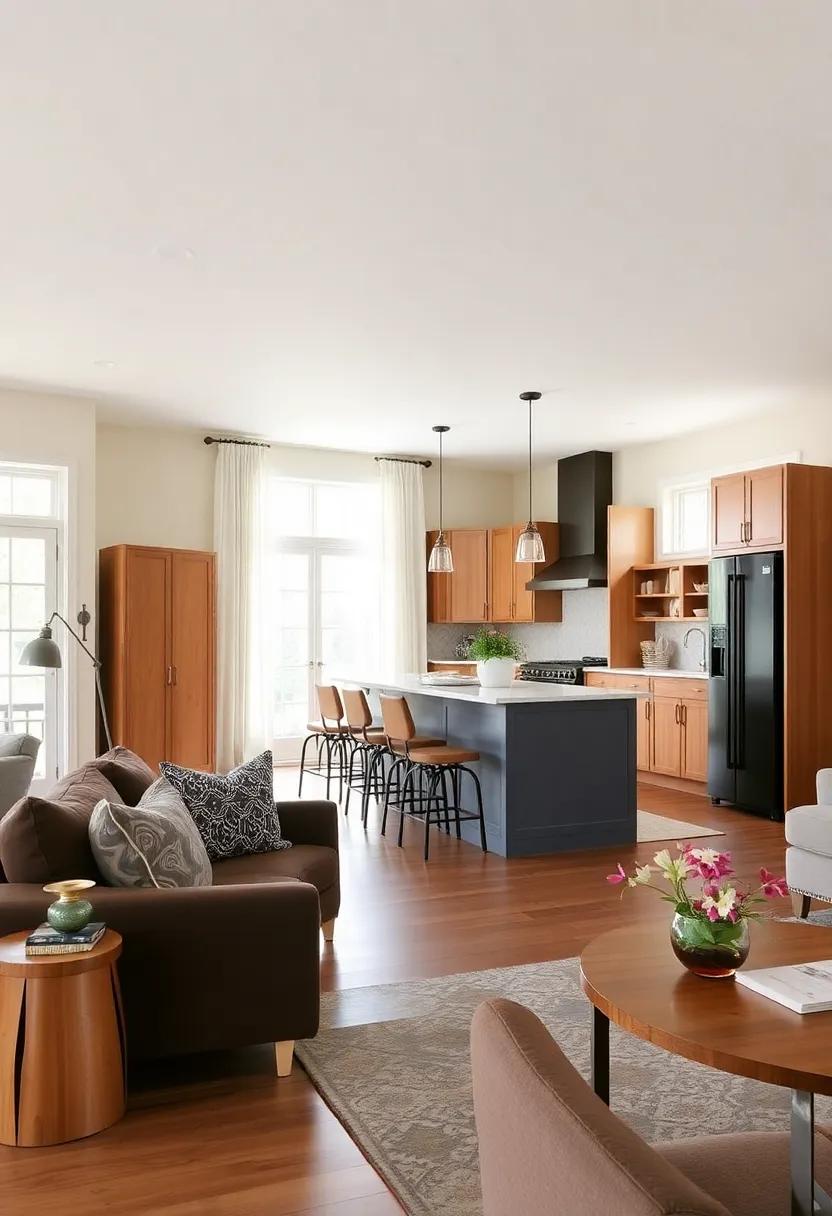
Choosing the right colors can set the tone for your open-concept living space, creating an atmosphere that feels warm and inviting. When envisioning a palette that promotes comfort, consider incorporating earthy tones like warm beige, soft browns, and muted greens. These hues harmonize beautifully with wooden accents and create a seamless flow between the kitchen and the living room. To enhance the cozy vibe, you might include splashes of burnt orange or golden yellow as accent colors, found in cushions or artwork, which can evoke feelings of warmth and cheerfulness.
Creating a visual balance in your space can be easily achieved by blending different textures along with the color palette. To further enrich this environment, think of layering materials—like soft textiles and natural wood. Here’s a simple table to illustrate some ideal color combinations and their potential sources:
| Color | Source |
|---|---|
| Warm Beige | Wall Paint |
| Soft Brown | Furniture |
| Muted green | Accessories |
| Burnt Orange | Cushions |
| Golden Yellow | Artwork |
Integrating these colors will not only elevate the aesthetics but will also foster a sense of serenity and refuge within your living space. The key is to maintain a balance that promotes visual interest while ensuring every element contributes to an overall atmosphere of warmth and comfort.
Incorporating Indoor Plants for a Fresh and Lively Environment
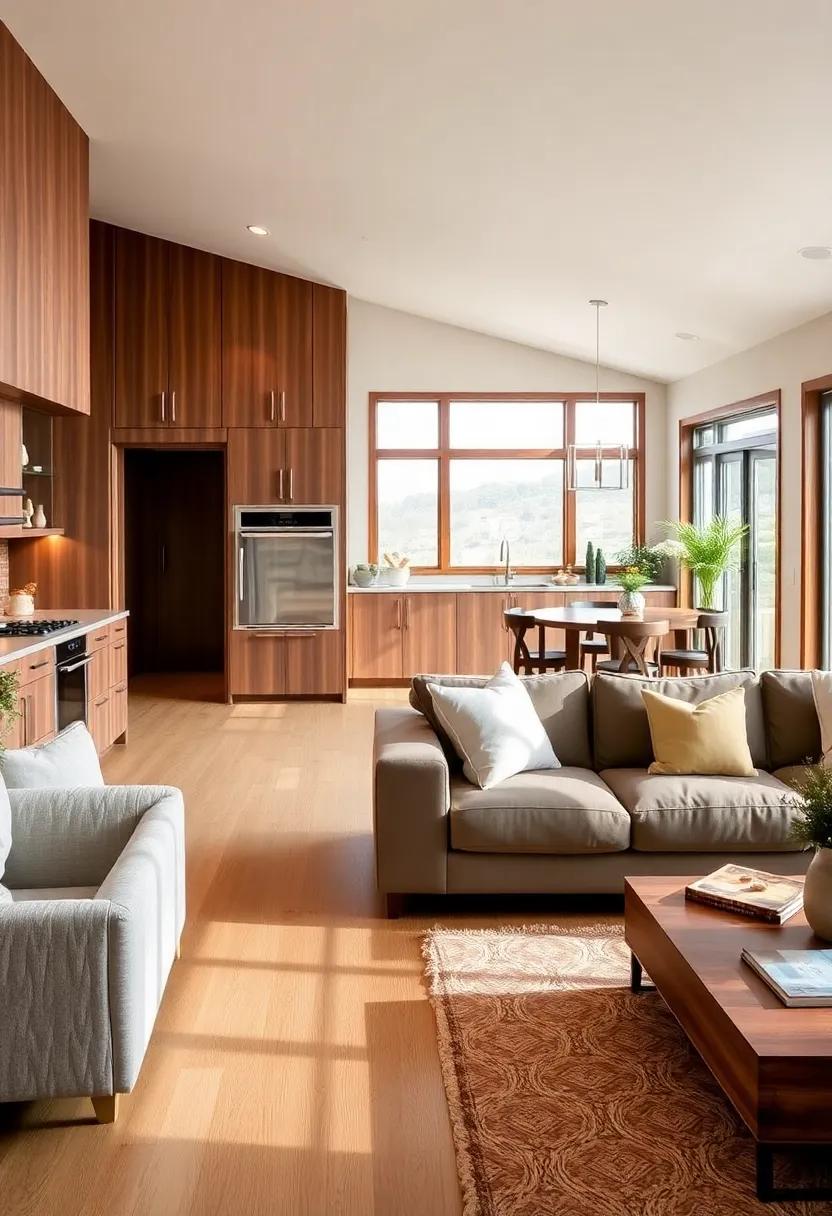
Integrating indoor plants into your living space is an excellent way to achieve a vibrant and inviting atmosphere. Not only do plants enhance the aesthetic, but they also improve air quality and contribute to a sense of well-being. Consider placing large potted plants like fiddle leaf figs or rubber plants near windows to utilize natural light, while smaller succulent arrangements can adorn shelves or tables, adding texture and color.Here are some suggestions for choosing the right plants:
- Low-Maintenance Options: Perfect for busy lifestyles, such as snake plants or pothos.
- Air Purifying Varieties: Consider peace lilies or spider plants to help cleanse the air.
- Statement Pieces: Large palms or monstera create focal points in your design.
To further enhance the warm ambiance,the choice of pots and planters can greatly influence the overall design. Opt for ceramic or terracotta pots with earthy tones to complement wooden accents. Additionally, creating a plant wall or hanging arrangements can free up valuable floor space while still allowing greenery to play a central role in your decor. Below is a quick overview of plant placement ideas:
| Plant Type | Ideal placement | Style Tip |
|---|---|---|
| Fiddle Leaf Fig | Near a window | Use a tall, textured planter for added height |
| Snake Plant | On shelves or corners | Pair with minimalist decor for contrast |
| Pothos | Hanging planters | Use trailing vines to soften angles |
Exploring Multifunctional Furniture for space Efficiency
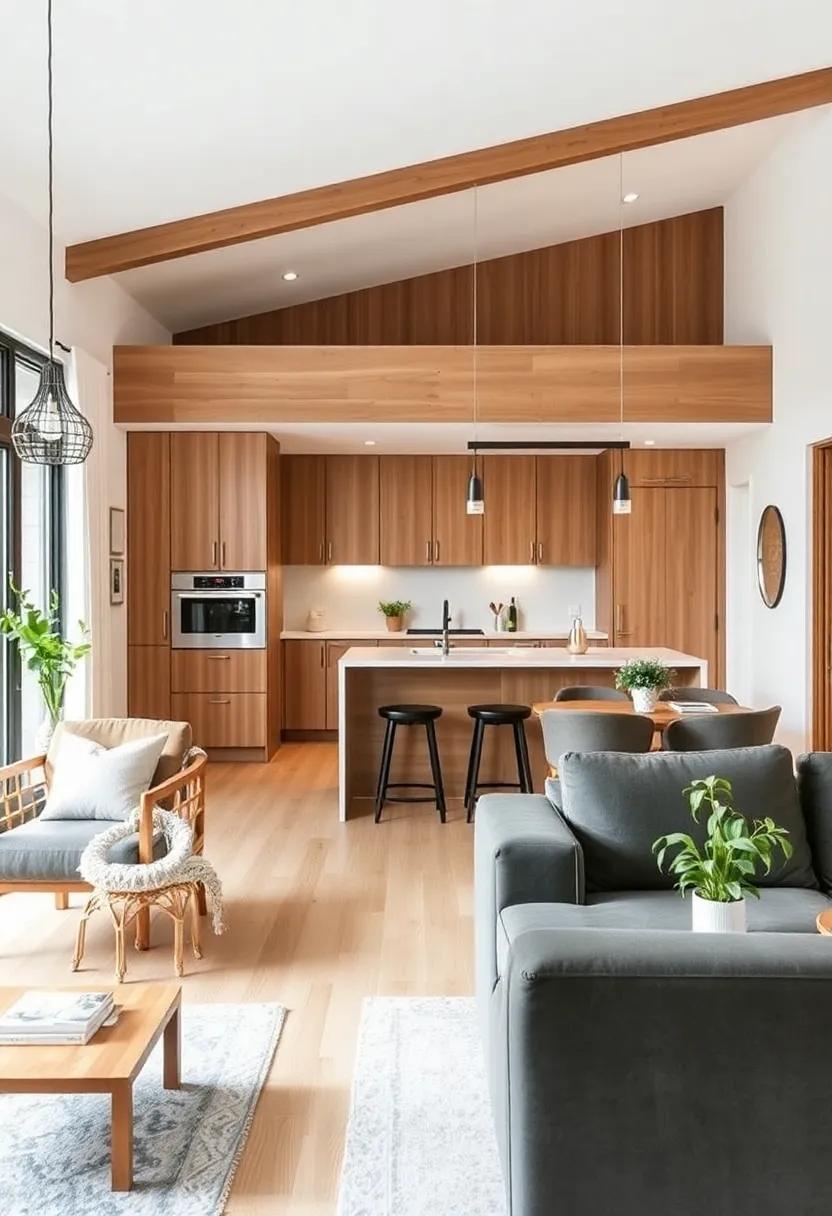
in today’s world, where maximizing space is essential, multifunctional furniture has become a game-changer for creating harmonious and efficient living environments. by choosing pieces that serve dual purposes, you can effectively transform your open concept space into a versatile haven. Some popular multifunctional furniture options include:
- Sofa beds – Perfect for unexpected guests, they easily convert from seating to sleeping arrangements.
- Ottomans with storage – These can act as coffee tables, extra seating, and hidden storage for blankets or magazines.
- Expandable dining tables – Ideal for intimate dinners or entertaining larger groups, these tables can adapt to your needs.
Strategically placing multifunctional items not only enhances the floor plan but also adds layers of warmth and style. For example, a beautifully crafted wooden coffee table can serve as a centerpiece while also accommodating drinks and snacks during gatherings. When selecting these pieces, consider how they complement the overall design while remaining practical. Use the following table to visualize the key attributes of multifunctional furniture:
| Item | Function | Style |
|---|---|---|
| Sofa Bed | Seating + Sleeping | Modern / Rustic |
| Storage Ottoman | Seating + Storage | Contemporary / Classic |
| Expandable Table | Dinner + Workspace | Minimalist / Farmhouse |
Designing an Inviting Island for Social Gatherings and Meals
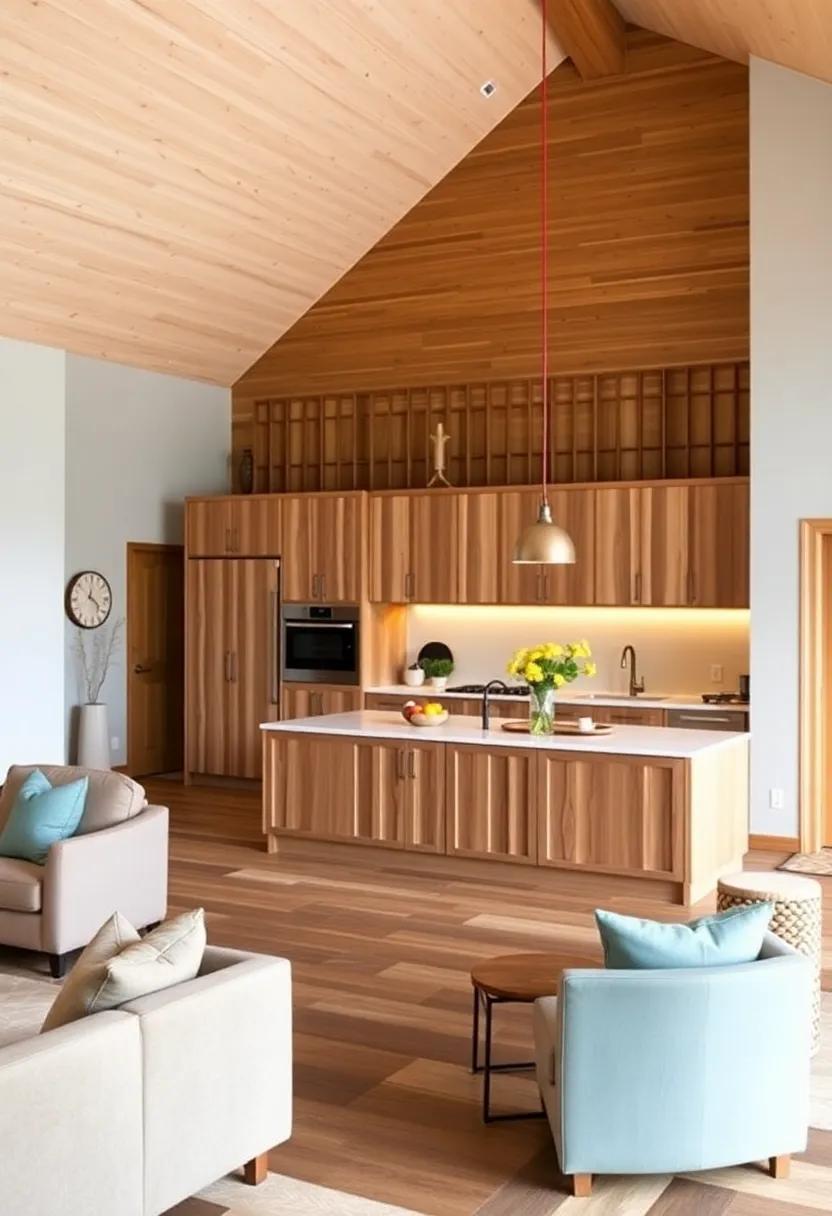
creating a social hub within your open-concept living space revolves around the idea of warmth and togetherness. An inviting island can serve as a multifunctional centerpiece, promoting both culinary creativity and conversation. Craft your design with natural wooden accents to enhance the organic feel, ensuring the island complements the overall décor. Consider incorporating features like:
- Comfortable Bar Stools: Opt for cushioned seating to encourage long gatherings.
- Ample Counter Space: Design a spacious surface that invites meal prep and snack sessions.
- Integrated Lighting: Install pendant lights to enhance the atmosphere during evening gatherings.
A well-designed island should also cater to various social scenarios, from casual breakfasts to festive dinner parties. Thoughtfully arranging a mix of textures can create a dynamic visual interest while remaining functional. Consider using a blend of finishes, such as matte and glossy surfaces, to draw the eye. Below is a simple comparison of seating options to guide your choice:
| Seating Type | Pros | Cons |
|---|---|---|
| Bar Stools | Space-saving, stylish | Less comfortable for long durations |
| Benches | More seating, casual vibe | Less formal, requires more space |
| Chairs | Comfortable, versatile | Takes up more room, can be heavy |
Using Textures to Enhance the Warmth of Wood elements
Textures play a crucial role in elevating the warmth and character of wooden elements in an open concept living space. by layering various textures, you can create a rich sensory experience that invites comfort. Consider the juxtaposition of smooth, polished woods with rough-hewn beams or woven textiles.This combination not only highlights the natural beauty of the wood but also adds depth to the overall design. Incorporate textures through elements such as:
- Soft furnishings: Use plush cushions or throws in organic fabrics to soften the hard surfaces.
- Accent pieces: Integrate items like wicker baskets or burlap decorations for a rustic feel.
- Wall treatments: Explore wood paneling with varied finishes, such as matte or distressed, for visual interest.
Creating a tactile landscape helps in establishing a welcoming atmosphere that draws people in. Adding finishes that reflect light, such as a glossy wood table, can complement textured elements perfectly.Utilizing a carefully curated mix can transform your space,fostering a serene yet stylish environment. Here’s a brief overview of some effective texture pairings:
| Element | Texture Type | Effect |
|---|---|---|
| Wood Beams | rough | Adds rustic charm |
| Cushions | Soft fabric | Enhances comfort |
| Furniture | Sleek finish | Creates elegance |
Lighting Strategies that Highlight Wooden Features in Your Space
To effectively showcase the beauty of wooden elements in your open concept living room and kitchen, consider utilizing a variety of lighting techniques that bring warmth and depth. Layered lighting is an excellent approach, combining ambient, task, and accent lighting to create a harmonious illumination that enhances the natural grain and texture of the wood. For instance, recessed lights can be installed to provide soft, overall brightness, while strategically placed pendant lights above an island or dining table can draw attention to wooden surfaces. Additionally, using warm white bulbs (around 2700K) will complement the tones of the wood, enriching its character and inviting a cozy atmosphere into the room.
incorporating accent lighting can significantly enhance the visual appeal of wooden features. Here are some ideas to consider:
- LED strip lights along the underside of shelves to highlight wooden cabinetry.
- Sconces mounted on walls adorned with wooden panels to cast gentle shadows and create interest.
- Directional spotlights that focus on decorative wooden accents, such as a beautifully crafted wooden sculpture or a rustic piece of furniture.
| Lighting Type | Purpose | Wooden Feature Highlighted |
|---|---|---|
| Recessed Lights | Ambient Illumination | Wooden Ceiling Beams |
| Pendant Lights | task Lighting | Countertops and Islands |
| Sconces | Accent Lighting | Wall Panels |
balancing Open Spaces with Designated Zones for Functionality
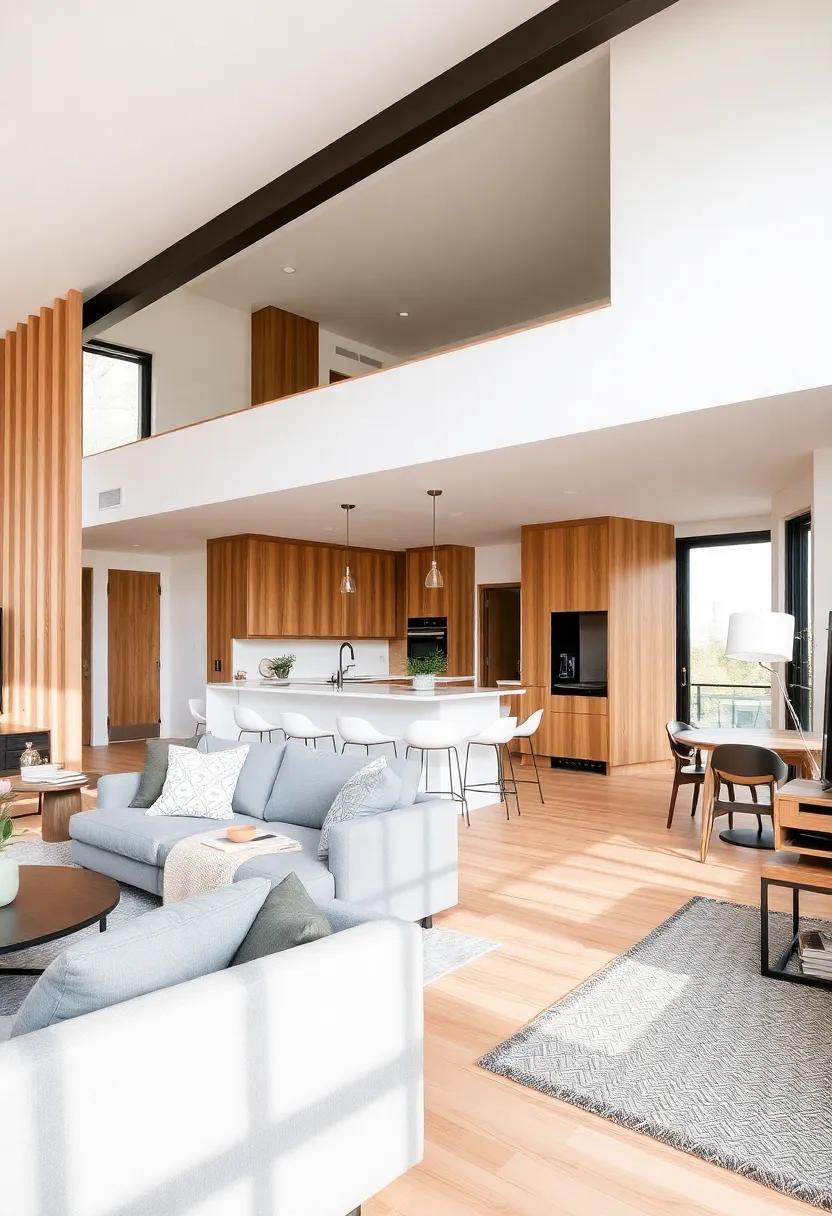
In designing an open concept living space that harmonizes a kitchen and living room, it’s crucial to define specific zones while maintaining a seamless flow. By using wooden accents strategically, various areas can serve distinct functions without feeling confining. For instance, the kitchen island can act as both a cooking station and a casual dining area, creating a cozy yet functional space. Consider incorporating the following elements:
- Wooden Beam Aesthetics: Exposed beams in rich wood tones can delineate areas while adding warmth.
- Color Coordination: Use complementary hues between the kitchen cabinetry and living room furniture to create visual links.
- Rug placement: Area rugs can define seating arrangements,differentiating the relaxation zone from the cooking area.
Moreover, integrating multi-functional furniture can enhance both usability and aesthetics. A stylish coffee table with storage can keep the living area tidy, while also serving as a centerpiece for social gatherings. Organizing the layout thoughtfully not only maximizes efficiency but fosters a sense of togetherness. Here’s a simple table to illustrate effective furniture choices:
| Furniture Item | function |
|---|---|
| Wooden Kitchen Island | Cooking & Dining |
| Modular Sofa | Flexible Seating |
| Storage Coffee Table | Central Gathering Point |
Incorporating Personal Touches and Artwork in a Cohesive Design

In an open concept living room kitchen, integrating personal touches and artwork can transform a basic space into a captivating environment that reflects your unique personality. Consider incorporating framed photographs or artistic prints that inspire warmth and creativity. Adding a gallery wall with various styles and sizes of artwork can create an eclectic yet harmonious focal point, inviting guests to admire your curated collection. Don’t forget to utilize wooden accents as a unifying element that ties together the overall design; a wooden frame for your artwork or even rustic shelves to display personal mementos can enhance the warmth of your spaces.
To further enhance the cohesive design, think about how different textures interact throughout the living room kitchen. Combining woven textiles, such as throw pillows or rugs, with smooth wooden surfaces can create a balanced visual appeal. Create a harmonious flow by using a consistent color palette that echoes throughout the artwork and decorative items. here’s a brief overview of elements that can bridge your design:
| Element | Purpose |
| Photographs | Add personal history and warmth |
| Art Prints | Introduce color and creativity |
| Wooden Shelves | Provide functional display space |
| Textiles | Create warmth and comfort |
Selecting Backsplashes that Complement and Accentuate Wooden Surfaces
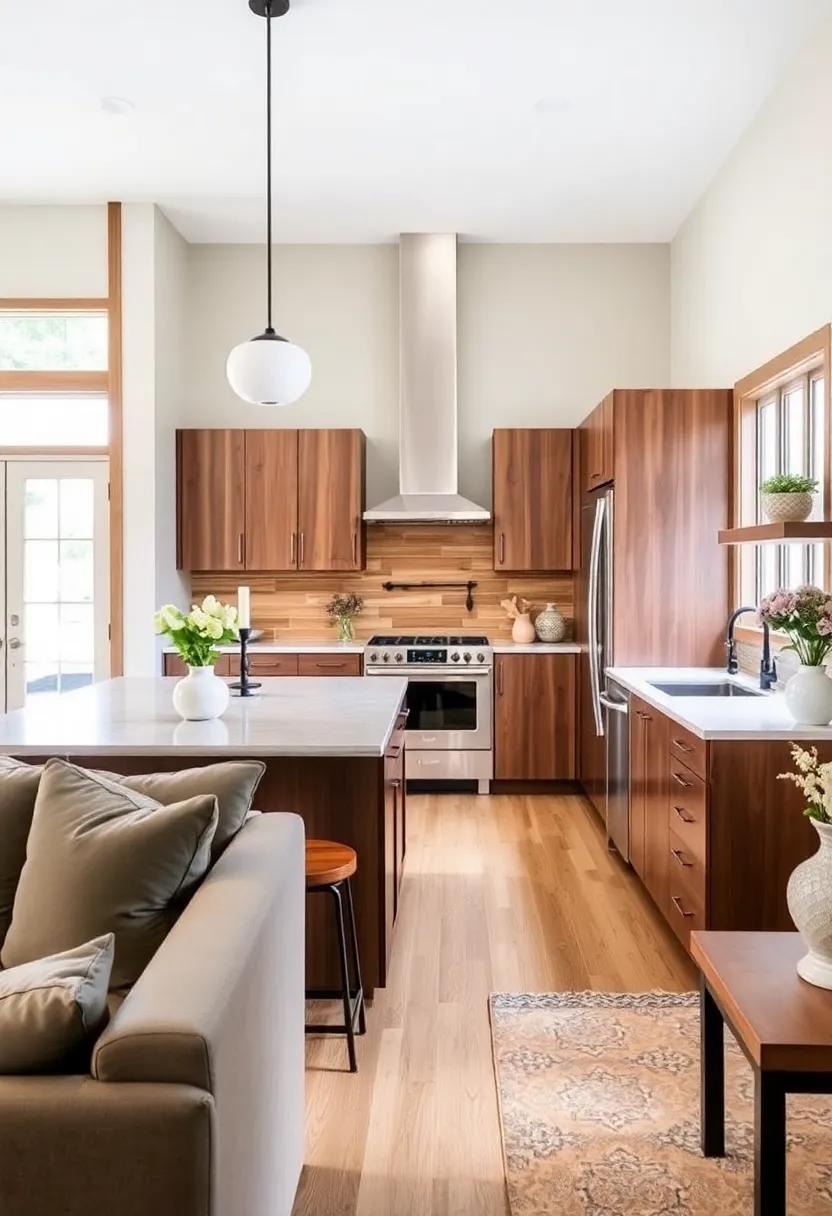
When integrating wooden surfaces within your open concept living space, the choice of backsplash can truly elevate the aesthetic, striking a balance between nature’s warmth and modern design.Materials to consider include:
- Subway Tiles: Classic white or muted colors can enhance wooden grain,allowing the natural beauty of the wood to shine without overpowering it.
- Natural Stone: Options like slate or granite can introduce additional texture and depth, harmonizing the organic appeal of wood.
- Glass Tiles: Reflective surfaces can add a contemporary twist, illuminating the space while showcasing the rich hues of the wood.
Additionally, think about the color palette and finish of your chosen backsplash. Opting for matte finishes can create a subtle, sophisticated backdrop, while glossy tiles can add a touch of vibrancy. Consider a color scheme that complements your wood tones, such as:
| Wood Tone | Backsplash Colors |
|---|---|
| Rich walnut | Ivory, moss Green |
| Light oak | Soft Blue, Pale Gray |
| Cherry Wood | Blush Pink, Cream |
By carefully selecting a backsplash that complements your wooden elements, you can forge a cohesive design that exudes warmth and style, making your living space inviting and appealing.
Utilizing Area Rugs to Define Spaces and Add Warmth
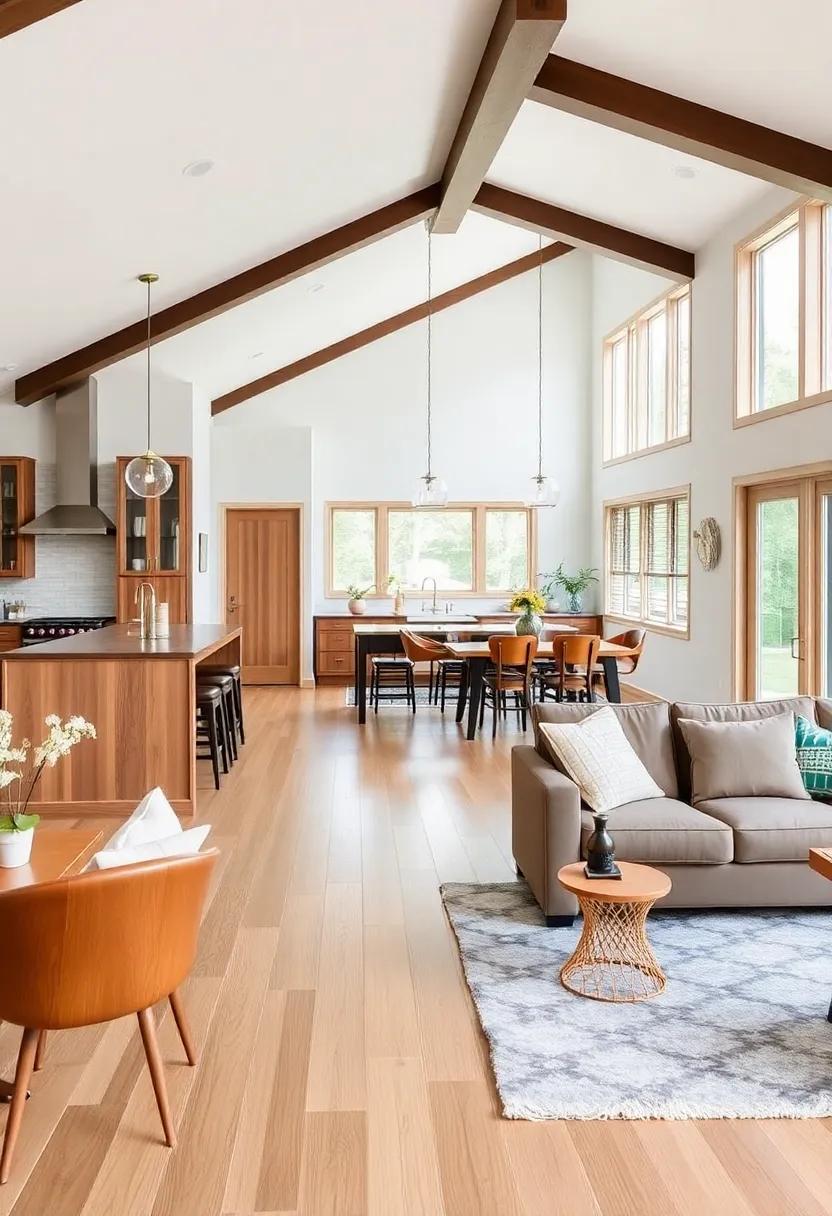
In an open concept living room and kitchen, area rugs serve a dual purpose, acting as visual anchors that help delineate each space while inviting a sense of warmth and intimacy. Choosing the right rug can create a cozy atmosphere, seamlessly blending the two areas. Consider various shapes and sizes tailored to the layout of your space; a large, plush rug can centre the living room around a coffee table, while a smaller runner can guide the eye from the kitchen to the dining area. Here are some tips to think about when selecting your area rugs:
- Material Matters: Opt for natural fibers such as wool or cotton for their durability and softness underfoot.
- Color Coordination: Select rugs that either complement or contrast with your wooden accents to enhance the overall aesthetic.
- Pattern Play: Incorporate patterns to add visual interest while considering the balance with solid furniture and cabinetry.
Strategically placing rugs can also enhance the functionality of your space. For instance, a lovely area rug can define a dedicated conversation nook within the living room, while a runner can delineate the cooking zone from the dining space. When arranged thoughtfully, these rugs can guide movement and activities naturally throughout the open layout. To further illustrate effective rug placement, consider the following suggestions:
| area | rug Style | Purpose |
|---|---|---|
| Living Room | Large Plush Rug | Creates a soft, inviting seating area |
| Dining Area | Jute Runner | Defines dining space and adds texture |
| Kitchen | washable Mat | Provides comfort and easy maintenance |
Strategic Use of Wall Colors to reflect Natural Wood Tones
Choosing the right wall colors is a pivotal step in enhancing the beauty of wooden accents within your open concept living room kitchen. Opting for shades that complement the natural hues of wood can create a cohesive and inviting atmosphere. Colors such as soft taupe, muted sage, and warm beige serve to highlight the organic qualities of wood, offering a backdrop that emphasizes its richness.When selecting a palette, consider the variety of wood tones present in the space—ranging from light oak to dark walnut—and choose wall colors that evoke harmony. This intentional design choice elevates the overall aesthetic, making the space feel warm and unified.
To further enhance this design strategy,consider incorporating textured finishes or subtle wallpaper patterns that mimic natural elements. These details can enrich the ambiance without overwhelming the eye. A well-thought-out selection of accent colors can also play a crucial role; think of soft earthy greens or muted blues that borrow inspiration from outdoor environments. Pairing these tones with your wood accents creates a serene flow throughout the space. Below is a simple table to visualize some effective color pairings:
| Wood Tone | Recommended Wall Color |
|---|---|
| Light Oak | Soft Taupe |
| Cherry | Warm Beige |
| Walnut | Muted Sage |
| Teak | dusty Blue |
Creating a Harmonious Blend of Modern and Rustic Styles
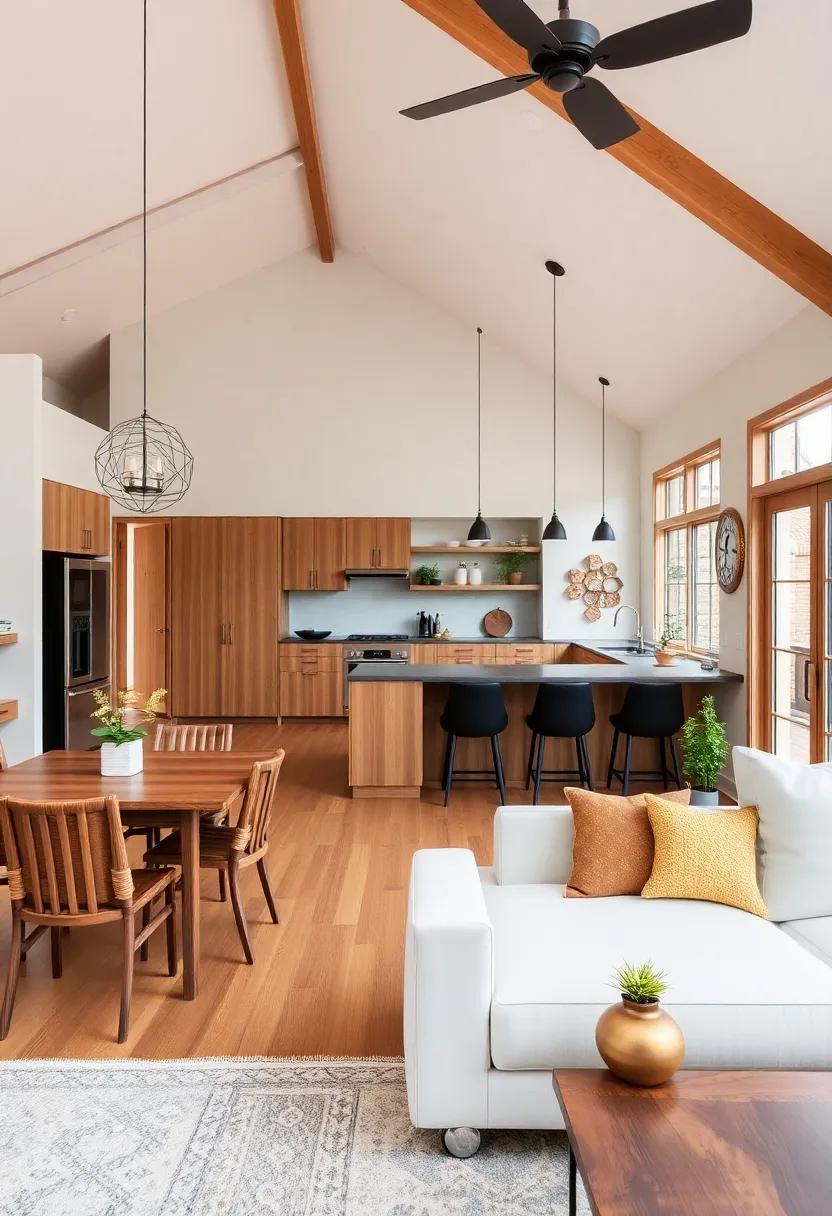
To achieve a stunning equilibrium between modern sleekness and rustic charm, consider integrating elements that celebrate both styles. Natural wood accents are highly effective in bridging the gap between contemporary and customary design. As a notable example, a reclaimed wood dining table can serve as a focal point, surrounded by sleek, minimalist chairs. Incorporating exposed beams not only enhances the rustic appeal but also draws the eye upward, enhancing the spaciousness of the open concept layout. Pairing modern,linear lighting fixtures with vintage-inspired decor creates a dialog between both aesthetics,ensuring a cohesive feel throughout the space.
Textures play a crucial role in this harmonious blend. Opt for a soft area rug that contrasts with the hard surfaces of polished concrete or sleek tile floors, adding warmth underfoot. A mix of materials such as metal, leather, and ceramics alongside wood enriches the visual narrative, while neutral color palettes accentuate the room’s natural ambiance. Additionally, incorporating greenery through indoor plants can soften the overall look, bringing life and freshness into the mix. With these thoughtful choices, your living room kitchen can become a sanctuary that celebrates both the modern world and the nostalgic allure of rustic design.
revamping Storage Solutions with Built-In Wooden options
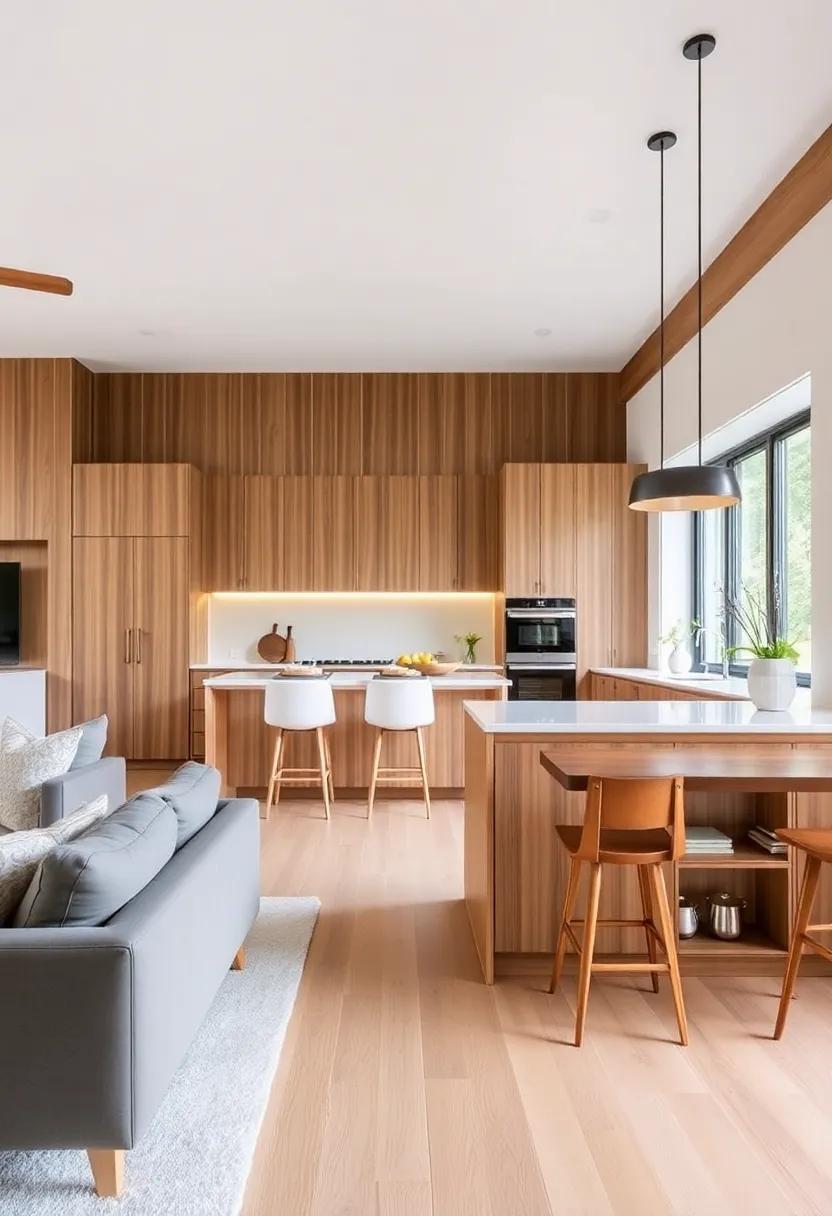
Incorporating built-in wooden storage solutions offers a seamless way to enhance both functionality and aesthetics in an open concept living room kitchen.These custom installations serve as beautiful focal points while providing ample space to organize your essentials. Consider options such as:
- Floating Shelves: Ideal for showcasing decorative items and maximizing vertical space.
- Cabinetry with Natural Finishes: Blending in with the surroundings, these can anchor your design and create a continuous flow.
- Bench Seating with Storage: A dual-purpose solution that provides additional seating while cleverly tucking away blankets and kitchenware.
To make the most of the available area, thoughtful placement and design are key. Using warm wood tones can create a cozy atmosphere while also maintaining an inviting, airy feel. A well-designed wooden island can serve as both a prep area and a casual dining spot.When considering dimensions and placements, an insightful table comparing storage options can provide clarity:
| Storage Type | Benefits | Examples |
|---|---|---|
| Floating Shelves | Space-saving, decorative | Simple wood planks, integrated brackets |
| Built-in Cabinets | Seamless storage, custom fit | Cabinets with glass doors, open shelving combos |
| Storage Benches | Functional, inviting | Window seat designs, multi-purpose cabinetry |
Designing a Family-Friendly Space that Encourages Connection and Relaxation
Creating a space that fosters connection and relaxation starts with an open layout that seamlessly integrates the living room and kitchen. This design approach not only maximizes natural light but also encourages family interactions while cooking or lounging. Incorporating wooden accents such as a reclaimed wood dining table, custom cabinetry, or floating shelves gives warmth to the environment, making it inviting and cozy. Soft,neutral palettes complemented by earthy tones enhance the feeling of tranquility,ensuring that every area feels like a holistic retreat.
To further promote togetherness, consider adding multi-functional furniture that serves various purposes. Implementing features like a large island with bar seating or a cozy nook with cushions can encourage informal gatherings. Essential elements of this design include:
- comfortable seating: Plush sofas and chairs for lounging.
- Layered lighting: Warm, dimmable options to create different moods.
- Natural elements: Indoor plants or floral arrangements to breathe life into the space.
A careful selection of textures and materials enhances the sense of warmth, with organic fabrics for upholstery and no-fuss wooden surfaces that stand up to family life. By inviting natural elements into your design,you not only create visual appeal but also a nurturing atmosphere for cherished moments.
Incorporating Soft Furnishings for Comfort and Coziness

To create a sanctuary within your open concept living space, soft furnishings play a pivotal role in establishing an inviting atmosphere. Consider integrating plush cushions and throws in muted tones that complement the wooden accents of your decor. Textured fabrics like velvet and knitted wool not only enhance the visual depth but also invite tactile exploration,making your space feel warm and inviting. With careful layering, you can use:
- Oversized cushions on your sofa to encourage relaxation.
- Layered area rugs to define distinct zones while maintaining flow.
- Soft drapery to soften window lines, enhancing natural light.
Additionally, the strategic placement of throws can instantly elevate your living area. Drape them over the back of a chair or across the sofa arm, introducing both comfort and a splash of color.Consider a few key tables to showcase the synergy between your soft furnishings and the wooden elements:
| Soft Furnishing | Wooden Accent |
| textured throw blanket | Rustic wooden coffee table |
| Chunky knit pillows | Reclaimed wood side table |
| Shearling accent chair | Live edge wood bench |
Celebrating the Beauty of Wood Grain in Design Elements
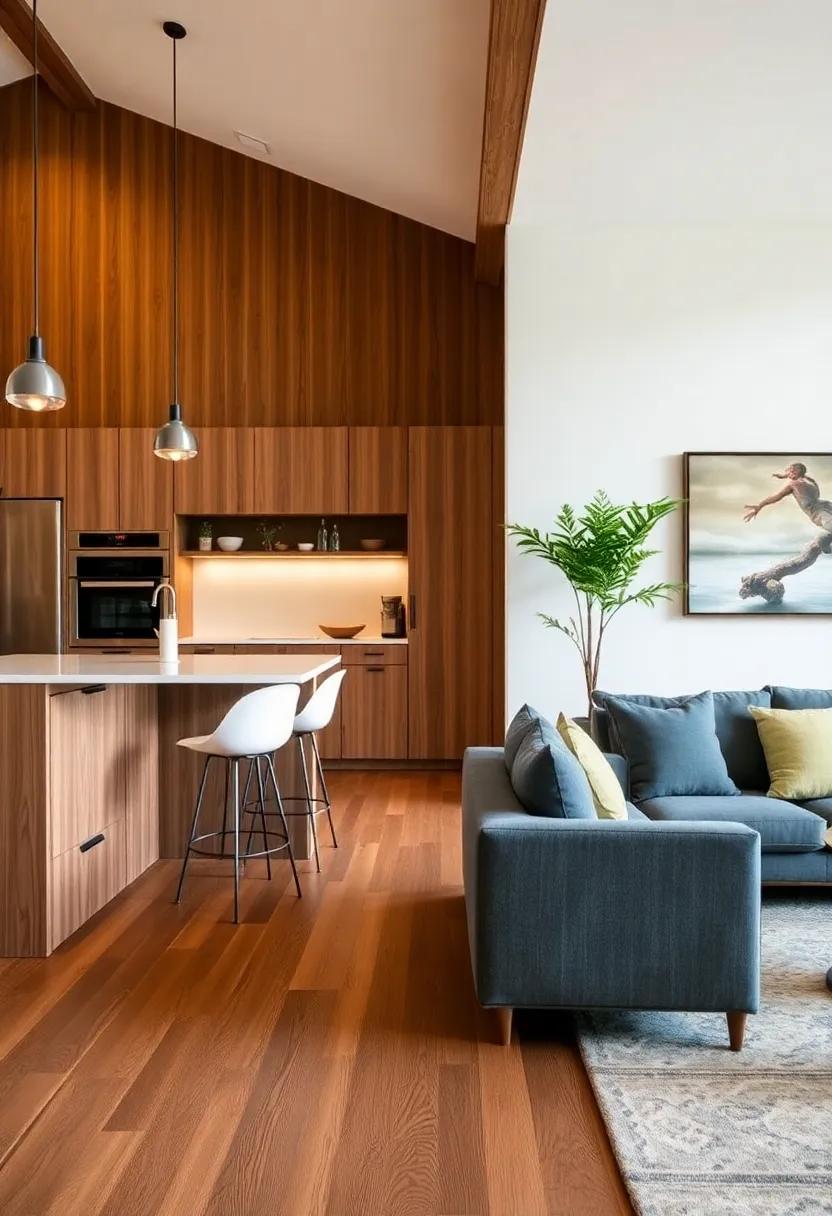
The allure of wood grain can profoundly influence the aesthetics of an open concept living space, infusing it with warmth and character. Wooden accents, whether in furniture, cabinetry, or decorative touches, create a visual narrative that celebrates the natural variations in texture and color. This organic beauty can be highlighted through various design elements such as:
- Exposed Beams: Adding rustic charm and elevating ceiling heights.
- Furniture Choices: Selecting pieces with rich, varied wood tones to serve as focal points.
- Accent Walls: Creating a feature wall with reclaimed wood for a striking effect.
Incorporating wood grain not only enhances the visual appeal but also instills a sense of harmony within the space. The interplay of natural light with wooden finishes can shift throughout the day, offering different moods and ambiance. Consider incorporating elements like:
| Element | Benefit |
|---|---|
| Natural Wood Flooring | Creates continuity between the kitchen and living room, making the space feel larger. |
| Wooden Accents in Decor | Adds textural variety and visual interest to the design. |
| Open Shelving | Showcases beautiful dishware while maintaining an airy feel. |
Key Takeaways
crafting a harmonious living space that seamlessly blends your kitchen and living room requires a thoughtful balance of design, function, and warmth. By embracing wooden accents—whether through cabinetry, flooring, or decorative elements—you can create an inviting atmosphere that resonates with comfort and homeliness. As you embark on this design journey,remember that each wooden detail contributes to a rich tapestry of textures and warmth,inviting family and friends to gather and create lasting memories. Ultimately,the open concept living room kitchen serves not just as a functional area but as the heart of your home,echoing the essence of togetherness.So, let your creativity flow, and infuse every corner with charm and character, making your space a true reflection of who you are.

